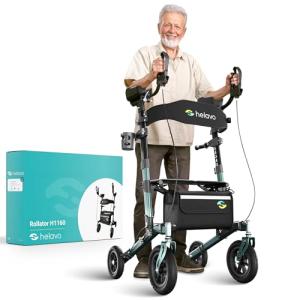20 Myths About Innovative Walker Design: Dispelled
Innovative Walker Design: A Leap Towards Enhanced Mobility
As the worldwide population ages, the need for efficient mobility options has actually become increasingly pressing. Traditional walkers, while functional, are typically slammed for being cumbersome and doing not have design development. However, a wave of innovation has actually infiltrated the market, producing modern walker styles that not only deal with the physical needs of users however also emphasize style, ergonomics, and technology. This blog site post checks out these groundbreaking walker designs, their features, and how they are enhancing the independence of individuals with mobility obstacles.
The Evolution of Walker Design
Historic Perspective
Walkers have actually come a long way given that their beginning in the early 20th century. Initially created as simple metal frames, these mobility help saw gradual enhancements over the decades. As awareness about ergonomics and user convenience increased, designers started presenting features that much better suited the distinct requirements of seniors and people with specials needs.
Present Trends
Recently, innovative walker designs have actually utilized technology, ergonomics, and modern aesthetics. Below are some of the key features that are transforming the walker landscape:
Feature
Description
Advantage
Lightweight Materials
Usage of products like aluminum and composite polymers
Much easier to maneuver and transport
Adjustable Height
Personalized measurements for each user
Boosted convenience and suitability
Compact Design
Folds for easy storage and portability
Benefit for users on the go
Integrated Technology
Features like smart sensing units and GPS
Improved security and navigation
Fashionable Aesthetics
Color choices and stylish styles
Enhances user self-confidence and desirability
Innovative Features of Modern Walkers
1. Ergonomic Design
Recent walker designs prioritize ergonomics, ensuring that the height, deal with grip, and general shape accommodate the user's convenience. For circumstances, curved deals with or hand grips made from soft, slip-resistant materials help reduce strain on the wrists and hands throughout usage.
2. Smart Technology
A notable pattern in walker design is the combination of wise technology. Some modern walkers come geared up with sensors that alert caregivers or member of the family if the user falls or displays signs of distress. Additionally, integrated GPS technology enables users to browse unfamiliar surfaces securely.
3. Multi-Functional Capabilities
Innovative walkers now provide additional functionality beyond simply helping with mobility. Some styles include integrated seats, storage baskets, and even cup holders. This multi-functional approach enables users to rest when needed and carry vital items, thereby promoting independence.
4. Adjustable Features
The ability to personalize a walker to fit specific needs has actually become a significant selling point. visit the up coming webpage , colorful accessories, and other customizable aspects enable users to have a walker that feels uniquely theirs.
5. Wheel Options
Some walkers now feature different wheel alternatives, consisting of bigger wheels for rough terrain or smaller ones for flat surface areas. This flexibility guarantees that users can navigate different environments without feeling unstable or uncomfortable.
Advantages and disadvantages of Innovative Walkers
While the developments in walker design bring many advantages, it's important to consider both the advantages and downsides.
Pros
Cons
Increased safety and stability
Prospective for higher costs
Greater user convenience and functionality
Some features may be unnecessary for all users
Stylish design alternatives improving user morale
Technology can be frightening for some users
Enhanced mobility and storage alternatives
Upkeep of advanced technology may be needed
Regularly Asked Questions (FAQs)
Q1: Are innovative walkers more expensive than conventional walkers?
A1: Yes, innovative walkers often feature greater price due to their advanced features and materials. Nevertheless, the investment may be rewarding for the included security, convenience, and independence they supply.
Q2: How do I select the ideal walker for my needs?
A2: When selecting a walker, consider your day-to-day activities, physical abilities, and any particular requirements you might have (such as storage or technology). Experimenting with various models in-store can help you find one that feels comfortable.
Q3: Are there walkers developed particularly for seniors?
A3: Many modern walkers cater particularly to the needs of seniors, featuring lightweight materials, ergonomic styles, and easy-to-use functionalities that enhance functionality.
Q4: Can walkers be utilized outdoors?
A4: Absolutely! Numerous innovative walkers included bigger wheels suited for outdoor terrains, making it much easier for users to navigate parks, walkways, and unequal ground.
Q5: Do walkers need much upkeep?
A5: Maintenance requires differ by design. Standard cleaning and periodic checks on wheels and mechanisms are normally enough. Technically advanced walkers may require software updates or battery replacements for sensors.
The innovative walker styles presently emerging in the market are a testimony to the imaginative approaches being taken to improve mobility help. These walkers not just serve their fundamental purpose however likewise enhance the user's quality of life by integrating security, functionality, and visual appeals into their design. As we continue to accept these improvements, it's vital for users and caretakers alike to stay notified about their options, making sure that individuals maintain their self-reliance and delight in the flexibility of movement.
With technology continuing to progress, the future of walker design appears bright, appealing enhanced solutions for mobility that deal with an ever-growing need for inclusivity and user-centered design.
